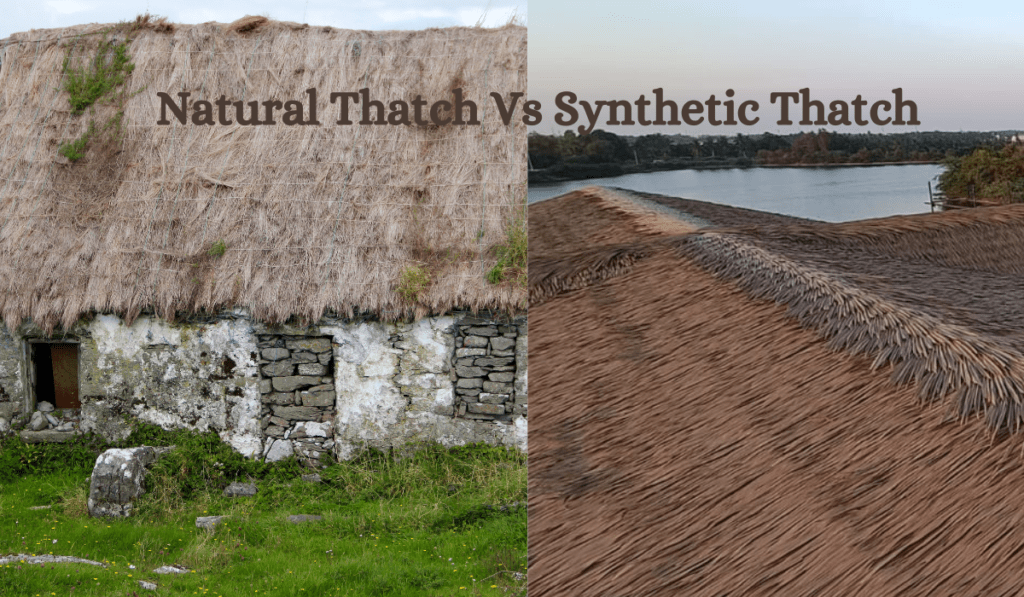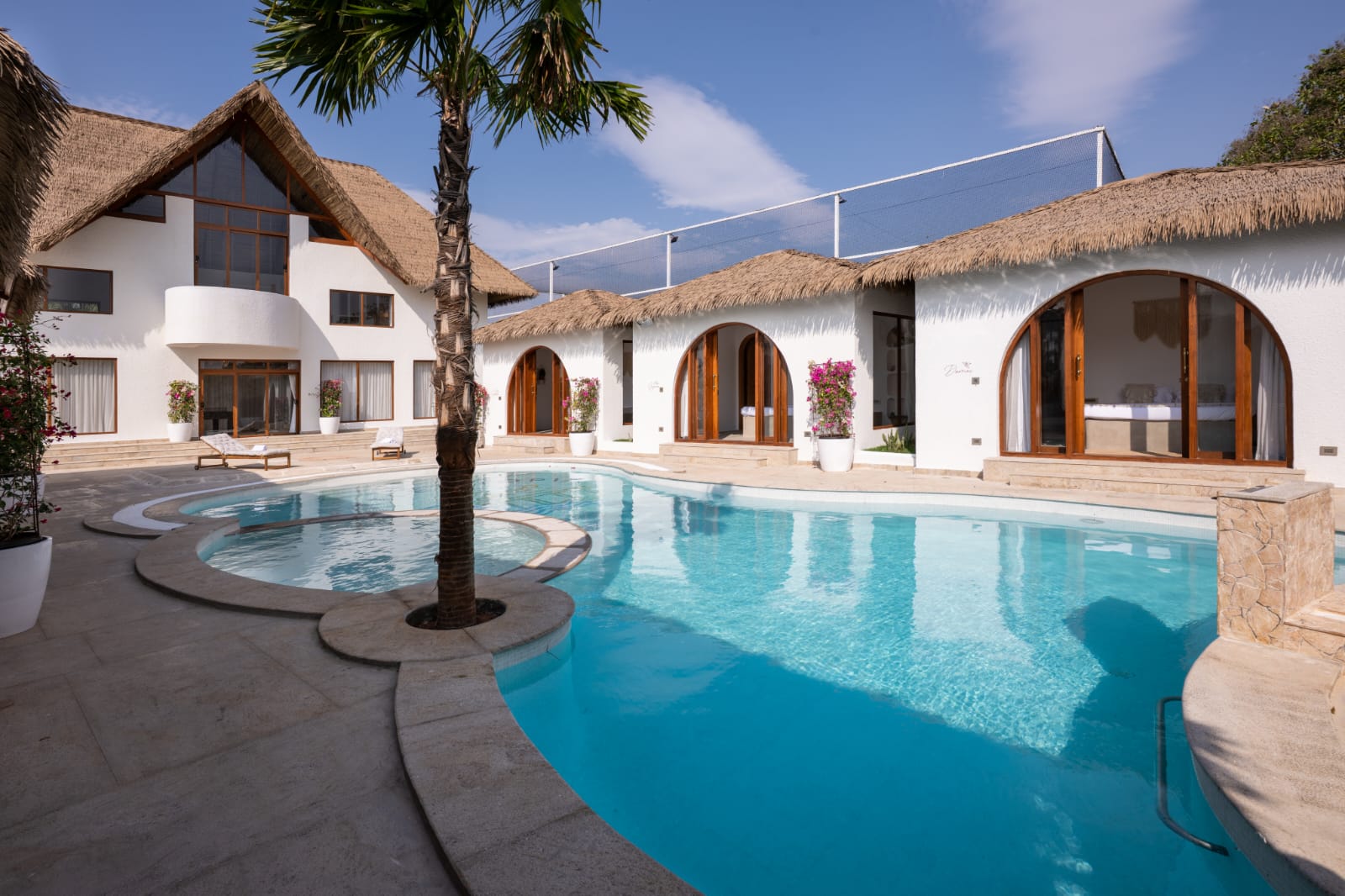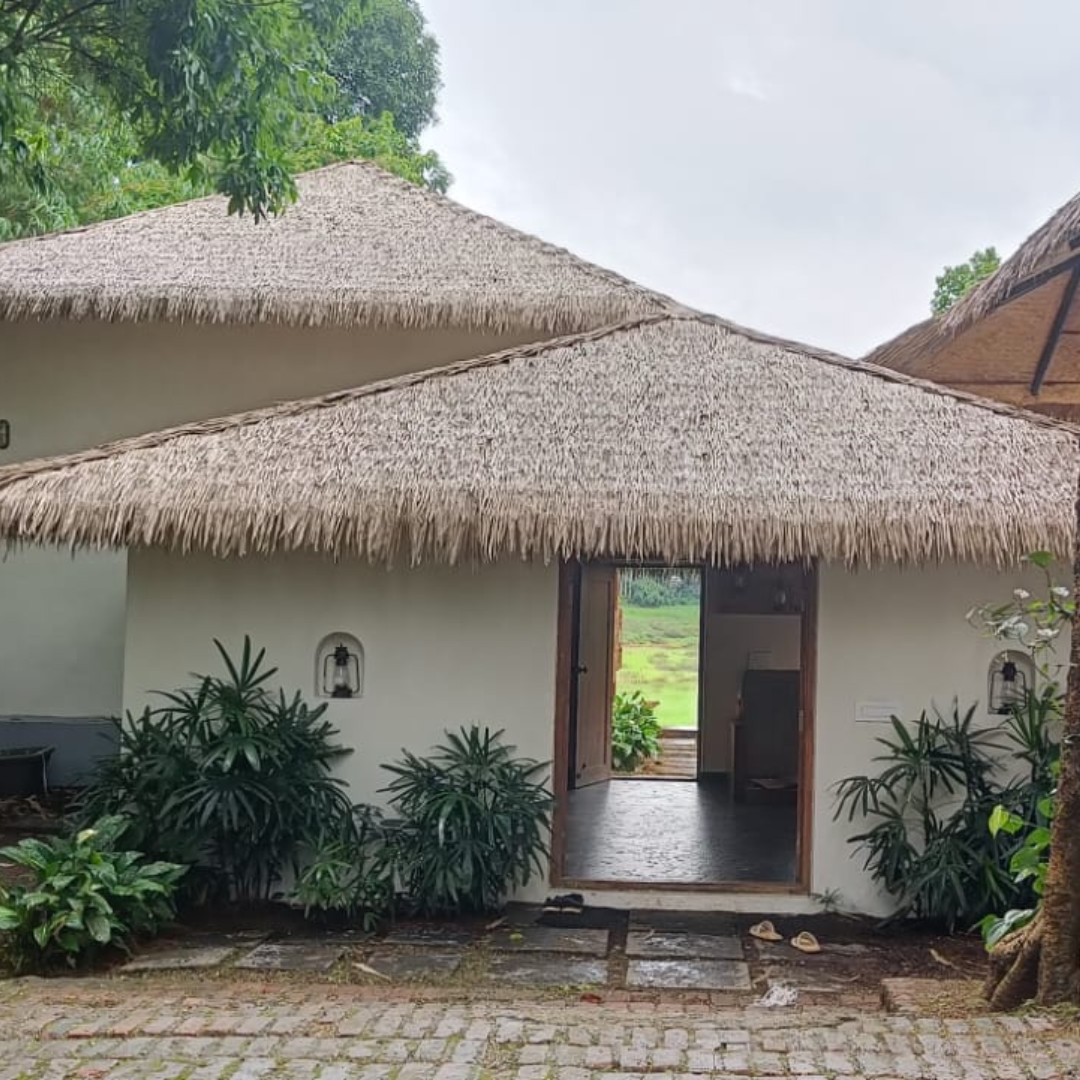The rustic charm of a thatched roof can instantly transport you to a tropical paradise or a cozy countryside escape. But before you start your thatched projects, choosing the right material is crucial. Here’s a comprehensive comparison of synthetic thatch and natural thatch to help you decide:
Durability:
- Synthetic Thatch: Wins! Made from robust materials like recycled plastic or nylon, synthetic thatch lasts 30–50 years, defying harsh weather and minimal maintenance.
- Natural Thatch: Loses. Composed of reeds, straw, or palm leaves, natural thatch deteriorates in 5–10 years, requiring frequent replacements and repairs.
Maintenance:
- Synthetic Thatch: With occasional cleaning and minimal upkeep, synthetic thatch maintains its beauty for years.
- Natural Thatch: Regular inspections, treatments, and replacements are necessary to combat rot, insects, and weather damage.
Fire Resistance:
- Synthetic Thatch: Many synthetic options are fire-retardant or even fireproof, offering superior safety for your property.
- Natural Thatch: Highly flammable, natural thatch poses a significant fire risk and may not comply with building codes.
Environmental Impact:
- Synthetic Thatch: Neutral. While not directly renewable, many options use recycled materials, minimizing resource consumption.
- Natural Thatch: Mixed bag. Harvesting can harm ecosystems, but it’s a renewable resource if managed sustainably.
Cost:
- Synthetic Thatch: Higher upfront cost. Though more expensive initially, its longevity and low maintenance often lead to lower long-term costs.
- Natural Thatch: Lower upfront cost. However, frequent replacements and maintenance can raise the total cost significantly over time.
Aesthetics:
- Synthetic Thatch: Varies. High-quality options offer realistic textures and colors, mimicking natural thatch closely.
- Natural Thatch: Authentic look. Provides a truly organic aesthetic, but color and texture can vary naturally.
Versatility:
- Synthetic Thatch: Wins! Available in diverse styles, colors, and textures, it adapts to various design visions, from modern to traditional.
- Natural Thatch: Limited options. Colors and textures are determined by the source material, offering less design flexibility.

Synthetic Thatch vs. Natural Thatch – A Comparison Table
| Feature | Synthetic Thatch | Natural Thatch |
| Durability | 30-50 years | 5-10 years |
| Maintenance | Minimal cleaning | Regular inspections, treatments, replacements |
| Fire Resistance | Fire-retardant or fireproof | Highly flammable |
| Environmental Impact | Neutral (recycled materials) | Mixed (renewable but harvesting impacts ecosystems) |
| Initial Cost | Higher | Lower |
| Long-Term Cost | Lower due to longevity and low maintenance | Higher due to frequent replacements |
| Aesthetics | Varies, high-quality options mimic natural textures closely | Authentic, natural look with less color and texture variation |
| Versatility | Diverse styles, colors, and textures for various design visions | Limited options based on source material |
| Suitability for: | Most scenarios seeking durability, low maintenance, and fire resistance | Those prioritizing true authenticity and natural aesthetics, accepting higher maintenance and environmental impact |
While both options offer unique advantages, synthetic thatch emerges as the clear winner for most scenarios. Its superior durability, low maintenance, fire resistance, and long-term cost-effectiveness make it a smart choice for homeowners and builders seeking a sustainable and practical solution. However, if authenticity and a truly natural aesthetic are paramount and natural thatch might be preferred. Considering its environmental impact and higher maintenance requirements.
Read this: Erectile Dysfunction Treatment: Comprehensive Guide for Optimal Solutions
Remember, the best choice depends on your priorities, budget, and desired aesthetics. Carefully weigh the pros and cons of each option before making your decision.




